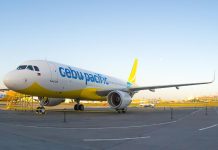
Rampant quarrying, wastes from livestock and poultry farms, and leachate are among issues and threats faced by the watersheds in Davao City.
Environmental Research Specialist Lemuel Lloyd Manalo of the Interfacing Development Interventions for Sustainability (IDIS) reported during the Davao City Watershed Stakeholders Summit that these threats continue to pose risks to the watersheds in Davao City and this is despite the strong calls from environmentalists for their protection and conservation.
Davao City has identified eight watersheds namely Davao River Watershed area that covers 116,446 hectares where Tamugan River, Cugan Creek watershed Area, and Suawan River watershed area are located; Matina Pangi River watershed area with an area of 7,880 hectares and consists of 18 barangays; Talomo River watershed area that 22,493 hectares and consists of 37 barangays; Lipadas watershed area that covers 16,768 hectares and consists of 27 barangays; Sibulan-Sirawan watershed with an area of 10,274 hectares and consists eight barangays; Bunawan-Panacan River watershed with an area of 18,201 hectares and consists 28 barangays; Lasang River watershed with an area of 28,452 hectares and consists of 12 barangays; and Tuganay River watershed with an area of 17,763 hectares and consists of five barangays.
Manalo reported that the Davao River basin, particularly the areas of Barangays Mandug, Dalagdag, Callawa, and Lampianao are the most dredged and extracted without replenishment intervals and threshold assessments due to illegal quarrying.
Manalo added that these quarry areas even reached Barangay Malamba and Barangay Bantol in the north. He also said that reports of illegal quarrying are rampant in Barangay Waan.
This is despite the cease and desist order issued by Mayor Sara Duterte-Carpio last year. Due to the distance and insufficiency in monitoring, the order was to completely hold the operations and clear out rampant illegal quarrying along the Lasang River.
Meanwhile, the Talomo-Lipadas watershed continues to face threats of increasing livestock and poultry farms along its vicinity wherein some are allegedly operating without permits.
Manolo also presented that the Panigan-Tamugan watershed in Baguio District is threatened by effluents and discharges from the mono-crop plantation and livestock farms, and residential wastes.
The Matina Pangi watershed in Talomo district is facing threats of leachate and effluents from the sanitary landfill in New Carmen that pollutes the river quality. This issue has been subjected to complaints from residents near the area.
“We are very much aware that we are under global pandemic, and despite that, our forces, partners, Bantay Bukid continue to participate and do their job in terms of environmental protection. It is very important to give them the support and acknowledge their efforts to protect our watershed areas and environment in general particularly right now, we are facing a climate crisis,” said Mark Peñalver, executive director of IDIS.
The Davao City Watershed Stakeholders Summit held on November 18, 2021, is an annual gathering of the watershed stakeholders in the city since 2013. This annual event is spearheaded by the Davao City Watershed Management Council and IDIS in partnership with various local government agencies, environmental networks, non-government organizations, and civil society organizations.
This year’s summit is an avenue for watershed stakeholders and Dabawenyos to deepen their understanding of the importance of upscaling disaster and climate resiliency in managing and protecting the watersheds and to continue the initiatives towards a sustainable and lasting solution.
Among this year’s objectives include solicit strategies and recommendations to effectively protect and sustainably manage the watershed amidst the health and climate crisis, showcase community-based efforts and practices in disaster resiliency and climate action representing watersheds in Davao City from ridge to reef, and conduct simultaneous community-based clean-up, riverbank, and coastal tree growing activities from ridge to reef.






